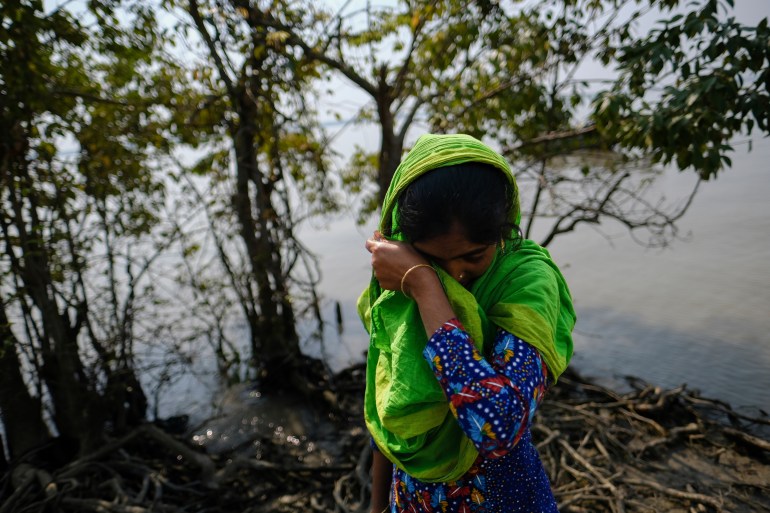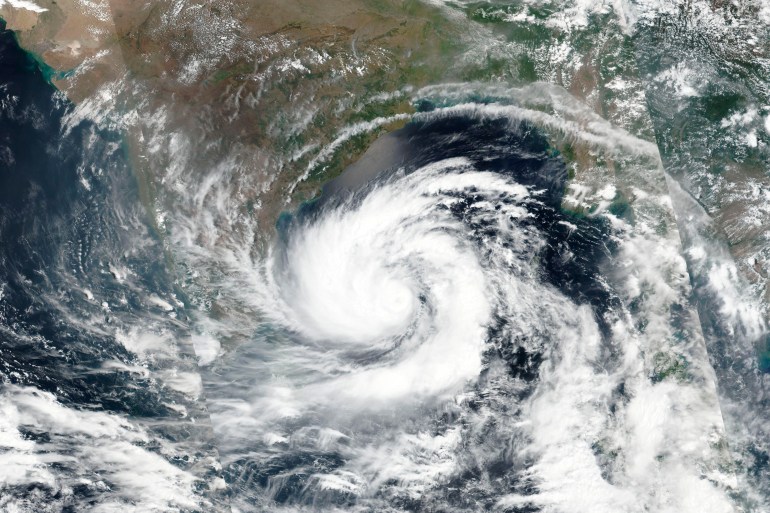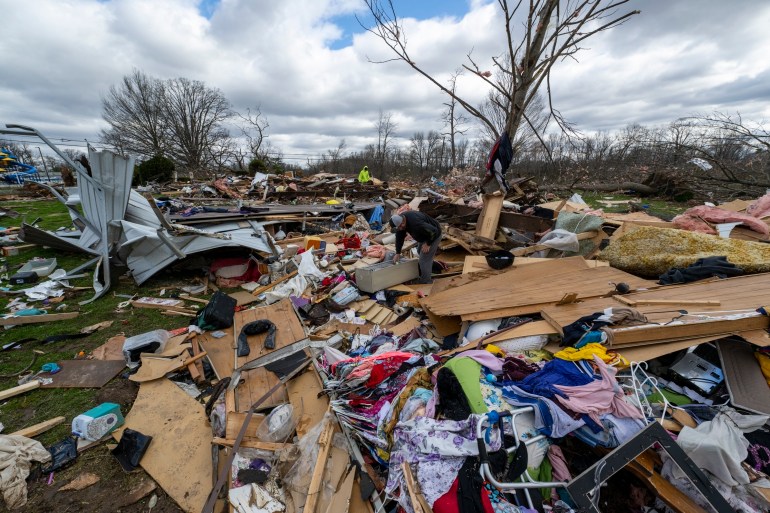WORD NEWS
Are storms getting extra highly effective and harmful? | Local weather Disaster
It began off innocuously, like some other tropical storm. However Cyclone Freddy, born off the northwest coast of Australia in early February, was something however odd. It intensified, then headed west and crossed the Southern Indian Ocean, travelling greater than 8,000km (4,971 miles) to achieve Southeast Africa.
By the point it will definitely dissipated after making two landfalls in mid-March, it had grow to be the longest-lasting tropical cyclone in recorded historical past. It was additionally the strongest storm ever recorded within the Southern Hemisphere, with its path of destruction leaving greater than 600 individuals lifeless and greater than 1.4 million affected.
But, at the same time as Malawi and Mozambique – the worst-hit nations – have been desperately pursuing rescue efforts, a devastating twister ripped by the southern American state of Mississippi in late March, killing greater than two dozen individuals and destroying cities. And late final week, highly effective storms and tornadoes struck an enormous swathe of the American South and Midwest, killing a minimum of 22 individuals.
Such lethal storms typically exacerbate humanitarian crises in affected societies. Madagascar, additionally hit by Cyclone Freddy, was already reeling from the results of lethal tropical cyclones in 2022 that killed greater than 100 individuals on the island nation.
Main storms additionally go away a legacy of well being woes. Mozambique is now battling a deepening cholera problem amid disruptions to sanitation and water provides due to the cyclone. Reported circumstances quadrupled between early February and March 20, crossing 10,000 sufferers, in line with UNICEF.
So are tropical storms rising in depth? What’s making them so highly effective? Is local weather change accountable? And may the world put together higher for such excessive climate occasions?
The brief reply: Mounting proof reveals that more and more hotter oceans are fuelling extra highly effective tropical storms than earlier than. The hyperlink to local weather change is obvious, say many scientists. There is no such thing as a fast repair. However alongside cuts in greenhouse fuel emissions, poorer communities within the World South desperately want help with local weather adaptation methods to scale back the dangers of demise, devastation and displacement.

‘The proper storm’
Tropical cyclones are robust, swirling storms usually shaped over heat oceans, with a minimal wind pace of 119 kilometres per hour (74mph) and with very low air strain on the centre. They’re also called typhoons within the North Pacific and hurricanes within the Atlantic Ocean.
A heat ocean helps cyclones intensify quickly, stated Roxy Mathew Koll, a local weather scientist on the Indian Institute of Tropical Meteorology in Pune, in an announcement to Al Jazeera. Freddy underwent intensification seven instances throughout its lifetime, he stated, helped by heat floor and subsurface waters that stored the cyclone alive for a report time period. These heat waters additionally persistently provided moisture to the cyclone – which confirmed within the floods triggered by the rain dumped by Freddy on southeastern African nations.
Koll described the “persistently heat ocean waters and extra provide of moisture” as “a transparent sign of local weather change”.
Shruti Nath, a local weather information researcher at Germany-based nonprofit Local weather Analytics, agrees with that evaluation of the components that made Freddy so highly effective and long-lasting.
“Freddy was an unprecedented, lethal cyclone” brought on by “a mix of Indian Ocean warming and ideal atmospheric circumstances,” Nath instructed Al Jazeera. “In different phrases, the right storm.”
But scientists fear that Freddy’s harmful report won’t stay unmatched for too lengthy. A number of research lately have advised that human-caused local weather change is probably going growing the depth of tropical cyclones. A evaluation [PDF] of over 90 peer-reviewed articles revealed in 2021 indicated that the world ought to put together for extra intense storms over the following century.
Some analysis additionally means that the precise variety of main storms is prone to enhance within the coming years. A group of US-based meteorological and local weather scientists concluded in 2020 that main tropical cyclones globally are growing in quantity by 8 % each decade.
And if the gradual warming of the oceans isn’t unhealthy sufficient, the specter of one other lesser-known however devastating coastal hazard, additionally attributed by scientists to international warming, can be rising – temperature surges on the ocean, often known as marine heatwaves.

A lethal mixture
Marine heatwaves – when the seawater floor temperature is abnormally excessive for a time period – are longer and extra frequent than ever earlier than. Scientists in Australia, the UK and the USA confirmed in 2018 that between 1926 and 2016, the frequency of marine heatwaves elevated by 34 %, and their length by 17 %. Globally, the variety of marine heatwave days grew 54 % over this era.
They’ve been proven to trigger coral bleaching and the destruction of seagrass and kelp forests. This injury to the ecosystems many different oceanic species rely upon in flip hurts marine biodiversity, analysis has proven.
And when a marine heatwave and a cyclone collide, an already harmful storm can flip right into a beast.
In Might 2020, Cyclone Amphan barrelled into Japanese India, killing greater than 100 individuals and forcing practically 5 million individuals to flee from their houses in India and Bangladesh.
For Babita Jangir, affiliate professor on the Centre for Oceans, Rivers, Ambiance and Land Sciences on the Indian Institute of Know-how (IIT) Kharagpur, the devastating cyclone hit nearer dwelling. Areas close to the institute, considered one of India’s prime engineering schools, have been ravaged by the cyclone.
Jangir determined to trace down the substances that had made Amphan one of the highly effective storms to hit India in current many years. In a research revealed in 2022, Jangir and her colleagues discovered that the wind pace of the cyclone had greater than doubled from 102km/h (55 knots) to 222km/h (120 knots ) inside simply 24 hours as a result of presence of a marine heatwave.
The research, she instructed Al Jazeera, confirmed that “the intensification of a cyclone can even happen as a result of presence of the marine heatwave”.
With the common warming of oceans already anticipated to extend the depth of cyclones, extra frequent marine heatwaves might turbocharge these storms. Jangir predicts that “long-lived and intense cyclones”, like Freddy, will solely develop extra widespread.

Seasons of devastation
The analysis by Jangir and her colleagues is echoed in findings midway all over the world from the Gulf of Mexico, the place oceanographers have additionally discovered {that a} marine heatwave can function an power booster for tropical storms.
However the results of a warming local weather aren’t restricted to particular person climate occasions.
Peter Pfleiderer, a researcher at Humboldt College in Berlin, led a research revealed in 2022 that appeared on the affect of ocean floor warming on hurricane exercise within the Atlantic Ocean. The research [PDF], which was co-authored by Nath of Local weather Analytics, discovered that the probability of “extraordinarily lively hurricane seasons” – which have a number of very highly effective cyclones – had doubled between 1982 and 2020.
“This analysis was a primary step in direction of attributing excessive hurricanes to human-caused local weather change,” Pfleiderer instructed Al Jazeera.
Excessive hurricanes additionally carry with them an equally lethal companion – a dramatic rise in seawater ranges often known as a storm surge, which regularly results in the flooding of coastal areas.
With ocean ranges already rising sharply lately due to international warming, scientists have proven that storm surges and related tidal waves will worsen sooner or later, and are prone to dump water farther inland than earlier than.
The direct hyperlink between local weather change ensuing from human actions and excessive climate occasions is now scientifically evident, Pfleiderer and Jangir each stated. The rising frequency and depth of droughts, warmth waves and wildfires all over the world has additionally been attributed to local weather change by scientists.
And a new report of the United Nations Intergovernmental Panel on Local weather Change (IPCC), launched in late February, ominously concluded that there’s a “temporary and quickly closing window of alternative to safe a habitable and sustainable future for all”.
But, regardless of the scientific and anecdotal proof, scientists fear that giant elements of the world stay unprepared.

‘Want extra various voices’
To a big extent, the worldwide nature of local weather change and excessive climate phenomena – the place a storm like Cyclone Freddy can span three continents – calls for an equally international response.
“We now have the expertise and functionality to scale back greenhouse fuel emissions globally however emissions stay at near report excessive ranges,” Andrew King, a senior lecturer in local weather science at Melbourne College, instructed Al Jazeera.
Lisa Schipper, an IPCC writer and researcher at Oxford College whose work focuses on the intersection of local weather change and human improvement, stated the “unequal” nature of the issue made it notably difficult. The World North is liable for greater than 90 % of the world’s extra greenhouse fuel emissions. And inside nations, the “wealthiest individuals are those who contribute most” however are additionally those who resist change probably the most, Schipper stated.
“Ultimately … a small lot of individuals are inflicting probably the most injury,” she instructed Al Jazeera.
Nonetheless, there are extra quick steps that may additionally assist nations keep away from the worst of the demise and destruction which might be the calling playing cards of harmful storms, say scientists.
Specifically, sturdy early warning techniques are necessary, stated Jangir, the researcher at IIT Kharagpur. A 2019 report by the Netherlands-based World Middle on Adaptation concluded {that a} day’s advance warning of an imminent storm or warmth wave might scale back injury to individuals and their property by 30 %.
And Bangladesh has proven how even a rustic with restricted sources can save 1000’s of lives by putting in a strong catastrophe preparedness system. After a lethal cyclone killed an estimated half 1,000,000 individuals in 1970 in what was then East Pakistan, the brand new nation of Bangladesh that was born a yr later arrange a cyclone warning and response system that it has honed over time.
At the moment, it depends on embankments to blunt the power of cyclones, 1000’s of shelters to accommodate displaced individuals and textual content alerts despatched out to warn communities about coming storms. Tens of 1000’s of volunteers man this response system – from serving to individuals evacuate to making sure that the shelters are stocked with meals, water and medicines. This has helped dramatically scale back the demise toll from lethal cyclones like Amphan, which claimed about two dozen lives in Bangladesh.
However whereas United Nations Secretary Normal Antonio Guterres has promised early warning techniques for all nations by 2027, that gained’t be simple: As of October 2022, solely half of the world had such techniques in place.
That’s compounded by a extra basic data hole. Most climate-impact analysis has centered on wealthy nations.
“Whereas excessive occasions have gotten the norm internationally, quite a lot of on-the-ground impacts are poorly documented in additional weak areas,” stated Nath of Local weather Analytics.
Presently, local weather adaptation methods – even when meant for creating nations – are sometimes devised within the West, following little or no collaboration with native communities, stated Schipper. “A coverage framed in a capital metropolis like London might be carried out someplace in Asia.”
That should change, she stated. “We’d like extra various voices to get extra correct data and options,” Schipper stated.
“We’re forsaking lots of people.”
Trending
-
Bank and Cryptocurrency12 months ago
Cheap Car Insurance Rates Guide to Understanding Your Options, Laws, and Discounts
-
Bank and Cryptocurrency12 months ago
Why Do We Need an Insurance for Our Vehicle?
-

 entertainement6 months ago
entertainement6 months agoHOUSE OF FUN DAILY GIFTS
-
WORD NEWS1 year ago
Swan wrangling and ‘steamy trysts’: the weird lives and jobs of the king’s entourage | Monarchy
